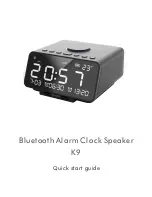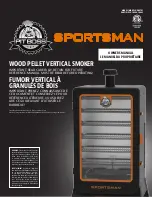
Page 1 of 2
HEAT ALARM User’s Manual
Type: GS401
SPECIFICATION:
Power source:
DC9V battery
Battery specification:
9Vdc Alkaline or Carbon Zinc Battery- GOLD PEAK
GP1604P, GOLDEN POWER 1604D
Battery Life:
at least 1 year.
Alarm current:
<30mA
Standby current:
<30uA
Maximum ambient:
50
℃
Recommended coverage:
200
㎡
Recommended spacing:
13.5m
Maximum distance from wall:
7.7m
Alarm sound level:
85 Decibels at 3 meters (10ft)
Locating the alarm
Heat alarms are intended to be supplementary to smoke alarms and should be placed
in areas where smoke alarm cannot be used.
If your dwelling is on a single storey, for a minimum protection you should fit a
smoke alarm in a corridor or hallway between the sleeping and living areas, place it as
near to the living areas as possible and ensure the audible alarm can be heard when the
bedrooms are occupied. See figure 1 for example/
If your dwelling is multi-storey, for minimum protection one smoke alarm should be
fitted at the bottom of the staircase with further alarms fitted on each upstairs landing.
This includes basements but excludes crawl spaces and unfurnished attics. See Figure 2
for example.
Note: for maximum protection smoke alarms should be fitted in every room (except
kitchen, bathroom and garage). Heat Alarms located in kitchens, garages, boiler rooms
etc. within 5.3m (17ft) of potential fire sources.
Do not fit an heat alarm in the bathroom, shower rooms or other room where the unit
may be triggered by steam or condensation.
Positioning the alarms
mounting(See diagram 1,2)
On a sloping ceiling
In areas with stopping or peaked ceilings install your smoke alarm 900mm from the
highest point measured horizontally because “dead air” at the apex may prevent
Areas to be avoided included the following:
s
ituations where the temperature may fall below 4
℃
or rise above 44
℃
Humid areas such as bathrooms, kitchens, shower rooms where the relative humidity
may exceed 90%.
Near a decorative object, door, light fitting, window molding etc. that may prevent
smoke or heat from entering the alarm.
Adjacent to or directly about hot components such as radiators or wall vents that can




















